Trying to understand the apostrophe can get challenging. There are many grammar rules that bind and break the use of an apostrophe. Though, apostrophe’s are used in almost every paragraph. They help to display ownership, possession, and pluralization.
Learn everything you need to know about the apostrophe in this comprehensive worksheet…
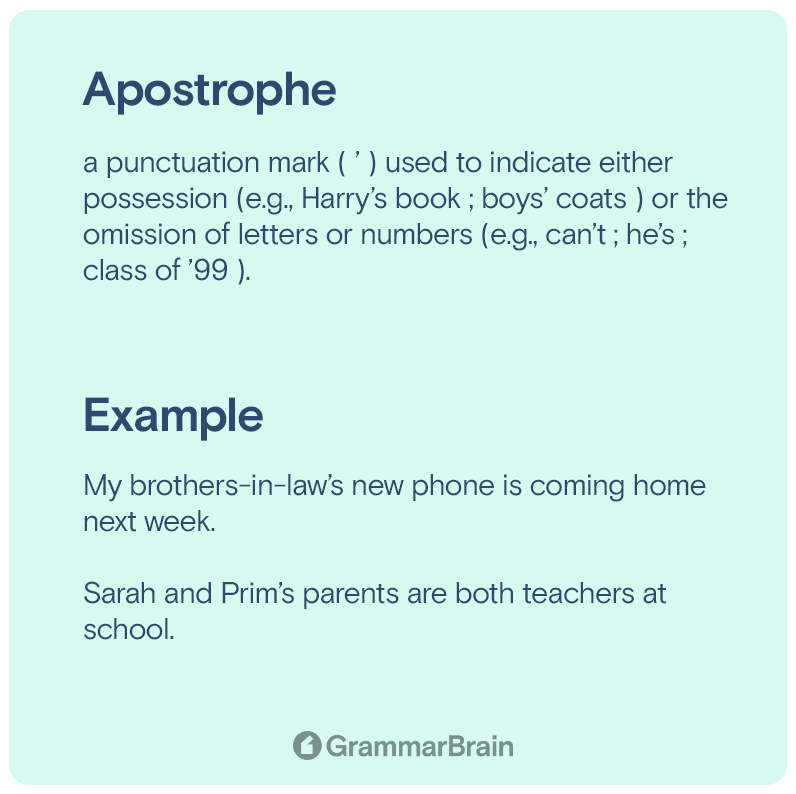
What is an apostrophe?
Apostrophes are used as a kind of punctuation in several languages. It is put into use to demonstrate that one noun has another noun.
Apostrophe definition
An apostrophe is a punctuation that can get used instead of a missing letter or letters in a contraction. It demonstrates either the possession of letters or the lack of letters.
For example, the apostrophe serves as a replacement for the letters “w” and “i” in the contraction “we’ll,” which stands for “we will.”
It’s also possible to demonstrate possession, such as in the phrase “Sam’s bike.” It is clear from the apostrophe that Sam is the owner of the bike.
| Form | Definition |
| Apostrophe (noun) /əˈpästrəfē/ | a punctuation mark ( ’ ) used to indicate either possession (e.g., Harry’s book ; boys’ coats ) or the omission of letters or numbers (e.g., can’t ; he’s ; class of ’99 ). |
How did it originate?
The apostrophe most likely appeared for the first time in the early 16th century, either in 1509, in an Italian edition of Petrarch, or in 1529, courtesy of French printer Geoffroy Tory.
Tory appears to have had a penchant for creating linguistic marks, as he is also credited with the invention of the accent and the cedilla.
It was a rhetorical phrase used to describe when a speaker would turn from the audience to address an absent person before it was employed in a grammatical context.
It originated in Greek and meant “the act of turning away.”
Watch this as a video lesson
Early English use
Apostrophes were introduced into English around the 16th century via French and Italian. The apostrophe was employed almost exclusively in place of several other letters.
Shakespeare, Thomas Jefferson, Benjamin Franklin, and Jane Austen are just a few of the numerous authors whose usage of apostrophes ranged widely from instance to instance.
Additionally, there was either uncertainty or dispute from the very beginning of the implementation of this system.
An illustration of this may be found in Shakespeare’s Henry V:
“In cases of defense, ’tis best to weigh the enemy more mighty than he seems.”
William Shakespeare
The letter I in the word “it” has been replaced with our apostrophe here. Even though it is not used as frequently as it once was, the regulation about apostrophes is still in effect today.
For instance, when the word “telephone” was originally reduced, it was written as ” ‘phone.” However, since its use has become so widespread, it is now written as “phone” without the apostrophe.
French use
In French, an apostrophe is used to substitute a final vowel that is not sounded because the next word likewise starts with a vowel or a silent “h.”
In English, this situation would be handled differently. Elision is the process of deleting a final vowel that is silent in a word.
Elision is only possible in written French when using the following words: ce, je, ne, moi, te, se, le, la, de, que, and si (only when using “il” and “ils”).
What does an apostrophe do?
To indicate that a noun has something (possession or ownership), a small punctuation mark known as an apostrophe (‘) is added after the word in question.
At the end of a noun owner (the possessor), the apostrophe is invariably positioned before or after the final letter s in the word. Always the noun word owner (relationship) will follow the item it owns, which will often happen shortly after the owner (the word’s relationship to other surrounding words).
| Apostrophe for Possessives | Apostrophe for Contractions |
| Amy’s swim class | they + have = they’ve |
| Karen’s car | are + not = aren’t |
| Robert’s vehicle | they + will = they’ll |
General grammar rules (when using an apostrophe)
The possessive singular noun is made by adding an apostrophe and the letter “s” to the singular noun in question, regardless of whether the singular noun ends in an “s” letter.
When a plural noun has an “s” at the end, the possessive form of the noun is created by simply adding an apostrophe. When the noun ends in any other letter, the possessive form is made by adding both an apostrophe and an “s.”
| Form | Example |
| Singular noun | Sarah’s |
| Plural noun | Women’s |
| 2 or more people | Kim and Adam’s |
| Singular noun ending in “s” | James’s and James’ |
| Plural noun ending in “s” | Parent’s |
| 2+ people | Kim’s and Adam’s |
Basic rule (singular nouns)
When referring to anything that belongs to another item or person, apostrophes are the punctuation mark a writer would use.
Simply adding an ‘s” letter to the end of a single noun will show that it is in possession of something. This is true for names and other types of proper nouns as well.
Examples
- Sonia’s book
- Sania’s favorite band
- Mother’s famous recipe
It is recommended, but not obligatory, to add a second “s” to the end of names that finish in “s” or have an “s” sound when forming possessive forms of those names.
More on this as we continue.
Basic rule (compound nouns)
To indicate the possession of a single compound noun, append an apostrophe and the letter “s” to the end of the word.
Example:
- My mother-in-law’s shawl was left with me.
- My brother-in-law’s girlfriend is coming home next week.
If the compound word in question has more than one instance, write the plural version before using the apostrophe.
Example:
- My sisters-in-law’s holiday will begin soon.
- My brothers-in-law’s new phone is coming home next week.
Joint or separate possession
Apostrophes get used to indicate ownership of a piece of text (sentence).
When two or more subjects make up a compound subject, those subjects can have either separate or joint ownership of the thing being possessed.
The use of a single apostrophe on the last subject denotes shared ownership, which implies that all of the components of the compound subject are the proprietors of the item.
They have separate ownership when each member of the compound subject has its own apostrophe. This indicates that each member of the compound subject is in possession of its own object when the apostrophe is present.
The following are some examples of joint ownership:
- Sarah and Prim’s parents are both teachers at school.
- Safiya and Tyler’s wedding will be hosted by Wedding101 company.
The following are some examples of individual ownership:
- Sarah’s and Prim’s fathers are both teachers.
- Fatima’s and Noor’s neighborhood is having an art competition next week.
With other punctuation, compounds with pronouns
Compound possessives, also known as joint possessives, are formed when two or more nouns (often names) co-own something. This results in the sharing of ownership.
Compound possessives can also be made up of one or more pronouns in place of the noun or nouns they originally referred to.
Examples:
Possessive form of a compound noun:
- Luna and Harry’s exam room is on the second floor.
Combination of a Possessive Compound with a Pronoun:
- Luna’s and his room are on the second floor.
Time and money use
Time
In terms of relating to time, the apostrophe is often utilized. These apostrophe’s that get used part of what is called “temporal expressions.“
The apostrophe should come before the “s” if the period of time being discussed is singular:
- a day’s work
- a week’s holiday
- a month’s food
The apostrophe should get added after the letter “s” if the duration of time being discussed is plural:
- two months’ notice period
- five years’ contract
- seven weeks’ diet plan
Money
In phrases referring to money, the apostrophe is often required (because there are many amounts).
Example:
- dollar’s pen
- five pound’s worth of cake
Refer to the table below to understand a temporal expression in more detail.
| Form | Definition |
| Temporal Expression | A temporal expression a some sequence of words that tell us when something happened (1), how long something lasted (2), or how often something occurs (3). Temporal expressions may be calendar dates, times of day, or durations, such as periods of hours, days, or even centuries. (MIT) |
Possessive pronouns and adjectives
Remember that adjectives and possessive pronouns like: “such as his, ours, hers, yours, its, theirs, and whose” don’t require an apostrophe.
Every other pronoun’s possessive form is followed by the apostrophe and an “s” letter.
In singular forms, such as “one’s, everyone’s, nobody else’s, somebody’s, etc.” the apostrophe comes before the “s” letter. But in plural forms, it comes after the “s,” exactly like it does with nouns: the others’ objections.
Disambiguation
The following four expressions each have their own unique meaning:
- My friend’s boyfriend’s car (the car of the boyfriend of my friend)
- My husband’s relatives’ apartment (the apartment of many relatives of my husband)
- My brothers’ friend’s car (the car of the friend of many of my brothers)
- My brothers’ friends’ car (the car of many friends of many of my brothers)
Use in singular nouns ending with an “s” or “z” sound
Some single nouns have an s or z added to the end of their pronunciation to indicate the sibilant sound.
These words are spelled with -s, -se, -z, -ze, -ce, -x, or -xe at the end of the word.
All singular nouns, such as those whose last sound is a sibilant, have possessive forms that include an additional “s” after the apostrophe.
This is done to ensure that the spelling accurately mirrors the underlying articulation of the word. The BBC, Oxford University Press, The Modern Language Association, and The Economist are just a few examples of such organizations.
These types of authority need the use of possessive singulars like “Bridget Jones’s Diary,” “Tony Adams’s acquaintance,” and “my boss’s work.”
Even though it is becoming less popular, some modern authors still adhere to the ancient practice of missing the second “s” in all situations that finish with a sibilant. However, this isn’t as frequent when the word is spelled with the suffixes -x or -xe.
Some modern sources, such as the Associated Press Stylebook, offer or permit the procedure of deleting the extra “s” in all words that finish with an “s.” But this isn’t acceptable for words that end with other sibilants (“z” and “x”).
Example sentences
- Bridget Jones’s diary is still very famous among readers.
- My boss’s job is very tough and demanding.
- US’s economy is getting stronger by the day.
Use in nouns ending with silent s, x, or z
The English possessive of French nouns that end in a silent s, x, or z is covered in several style guides (APA, MLA, and Chicago Style).
| Style guide | Apostrophe rule |
| CMOS (The Chicago Manual of Style) | add apostrophe + s to the singular form of the word, even if it ends in “s.” Does not suggest adding an apostrophe in a word that ends in “s.” |
| APA | adding an apostrophe to the end of a word that ends in “s.” |
| MLA | add apostrophe + s to the singular form of the word, even if it ends in “s.” Does not suggest adding an apostrophe in a word that ends in “s.” |
There is no dispute that a sibilant is articulated in examples such as Descartes’ and Dumas’; the problem is deciding whether the letter “s” should get added or excluded.
For possessive plurals of nouns ending in a silent x, z, or s, the few sources that discuss the matter often ask for an extra “s” and propose that the apostrophe forego the s: The Fox’s homeland is in the Jungle.
Example sentences
- Illinois’s food is one of the best I have ever had.
- I would love to visit Arkansas’s water park.
Use of possessives in geographic names
The possessive form of the mark is not used for place names (i.e., a destination) anywhere in the United States, even on official maps and signage.
Since 1890, the US Board on Geographic Names, responsible for formally naming metropolia and geographic segments, has discouraged the use of possessive apostrophes.
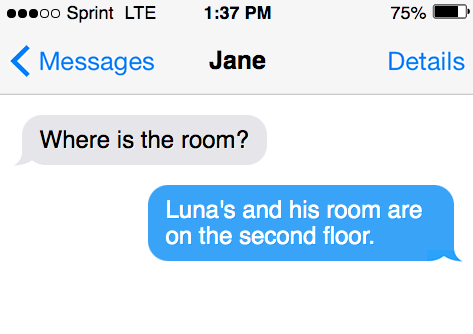
This was done so that the apostrophe would not get misunderstood as an indication of possession.
Martha’s Vineyard, Ike’s Point in New Jersey, John E’s Pond in Rhode Island, Carlos Elmer’s Joshua View in Arizona, and Clark’s Mountain in Oregon are the only five natural features in the United States. The names of the latter are spelled officially with a genitive apostrophe.
In compliance with this policy, the apostrophe was eliminated from the names of several communities that were first formed with the use of the apostrophe; for example, the city of Taylors Falls in Minnesota was initially embodied as “Taylor’s Falls.”
| Base form | Use of apostrophe example |
| Was not | Wasn’t |
| When is | When’s |
| She had | She’d |
| Has not | Hasn’t |
| We are | We’re |
In addition, the Intergovernmental Committee on Surveying and Mapping of Australia adheres to a no-apostrophe policy, which is a practice that, according to the committee, dates back to the 1900s and is typically observed throughout the country.
Then, the United Kingdom contains Bishop’s Castle, Bishop’s Stortford, King’s Lynn, St. Andrews, St. Albans, and St. Helens.
There are many additional cities in the United Kingdom. The Piccadilly line of the London Underground features Earl’s Court stations in both Earl’s Court and Barons Court, which are located close to one another.
Example sentences
- I would love to visit Creeks trail.
- She has gone to Arches National Park.
Use of possessives in names of organizations
Although it is typically accepted to include an apostrophe in the names of clubs, societies, and other types of organizations, this punctuation mark is occasionally left off.
The use varies widely and is not consistent. Style guidelines typically recommend contacting an authoritative source for the conventional structure of the term. (Confusing, right?)
Some style guides trend toward stronger prescriptiveness, either for or in opposition to such an apostrophe.
Example sentences
- International Womens Association for Aviation
- Dunnes Store has a massive discount.
Use in forming plurals
After undergoing a shift in usage during the 20th century, the apostrophe of plurality survives in several contexts today.
Abbreviations
Nowadays, it is popular to use an “s” without an apostrophe when writing abbreviations, including acronyms, instead of using an apostrophe when writing an “s.”
Most contemporary style standards recommend avoiding using apostrophes in any kind of plural abbreviation.

Some sources still allow their usage and even promote the use of some abbreviations, while others condemn it.
The V.I.P.’s, VIP’s, and VIPs are all tolerated similarly by the Oxford Companion to the English Language.
Examples
- The G.M.’s final rule was acceptable to all.
- The M.D.’s absence raised many questions.
Letters of the alphabet and small words
It is customary to use the apostrophe to indicate pluralization for single lowercase characters. A lot of manuals recommend the use of apostrophes, regardless of whether the individual letters are capitalized or not.
Only lowercase letters are recommended for use with the apostrophe of plurality in the Chicago Manual of Style.
The simple addition of an “s” rather than an apostrophe might leave the meaning unclear and the presentation clumsy when added to a sentence. However, an apostrophe is not necessarily the best option in every situation.
Italics should get used in place of an apostrophe when writing in APA style; examples include ps, ns, and so on.
Examples
- She gave me the rule book of all dont’s.
Numbers and symbols
The Oxford Companion to the English Language observes that “a plural s following a sequence of numerals is commonly followed by an apostrophe, as in 3’s and 4’s, but many people now favor 3s and 4s.”
Most style guidelines recommend leaving off the apostrophe when referring to groups of years (such as the 1980s—centuries and decades), and they recommend using 90s or ’90s rather than 90’s or ’90s.
These same style guidelines recommend against using an apostrophe in any numbers or dates; nevertheless, many other style guides either recommend using an apostrophe for numbers or have conflicting opinions on the topic.
Still, some manuals adopt a policy of leaving things up to chance. For instance, the online guidance provided by the University of Sussex states that there is geographical diversity in the usage of apostrophes in dates.
The advice condones the use of 1s and 7s as well as 1’s and 7’s, but favors the former.
Examples
- She lived in this house in the 1990s.
With family names
Most English sources produced after the middle of the 20th century consider using apostrophes in family-name plurals to be erroneous (as in not great).
For instance, Joneses is considered to be proper, but Jones’s is considered incorrect.
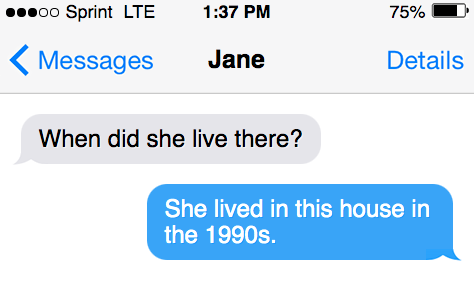
Examples
- The Smiths will come back on Friday.
- The Johnsons home is getting a makeover.
10 common mistakes when using an apostrophe
Here are ten common mistakes when using the apostrophe:
- With Plurals
- With Pronouns
- With Shared Possession
- With the Possessive Form of a Surname
- With the Plural Form of an Abbreviation
- With the Plural Form of a Numeral
- With a Span of Years
- With the Plural Form of a Word Used as a Word
- With the Plural Form of a Letter Used as a Letter
- With Brand Name
With Plurals
It is a common mistake to write the plural form of a word with an apostrophe before the letter s that indicates the plural form. One example of this would be writing taxi’s instead of taxis.
With Pronouns
Only in the case of contracted forms of pronouns (for example, he’s), an apostrophe and a s are used after the pronoun. There is never an apostrophe after possessive pronouns such as “theirs” or “yours,” for example.
With Shared Possession
The possessive form of each name should be used whenever two or more individuals or other entities are portrayed as jointly or individually possessing something.
With the Possessive Form of a Surname (Last Name)
It is inappropriate to write “The Brown’s house” on the shingle that is affixed to your neighbor’s front porch unless your neighbor’s given name is “the Brown.” The name of the Brown family’s home should be written on a sign as “The Browns’ house” (or just “The Browns”) to identify it correctly.
With the Plural Form of an Abbreviation
When using plural forms of abbreviations, the apostrophe is not necessary. For example, you may write “They disarmed or detonated many IEDs” (not “IEDs”) in your text.
With the Plural Form of a Numeral
For example, “The 90s” and “The 90’s.”
With a Span of Years
In the highly uncommon circumstance of denoting more than one instance of a digit, an apostrophe should not get used. For example, “Write three 7s on a piece of paper” (not 7’s).
With the Plural Form of a Word Used as a Word
Some periodicals continue to use an apostrophe when referring to a range of years, even though this form has become archaic. For example, “1950s-1980s.” This is the correct form instead of “1950’s-1980s.”
With the Plural Form of a Letter Used as a Letter
Apostrophes should not get used for the conjunctions in the sentence “There are no ifs, ands, or buts about it.”
Or for the counterpoints in the sentence “A handy list of dos and don’ts follows.” (Keep in mind that the inherent apostrophe should be left in place in the plural version of don’t).
With Brand Names
Even when the letter is emphasized (using capitalization), it still appears odd just to write a “s” next to it to signify plurality; hence, you need to attach an apostrophe: “How many m’s do you spell hmm with?” (Follow this rule even when italicization isn’t required, like in the case of the statement “Mind your p’s and q’s,” for example.)
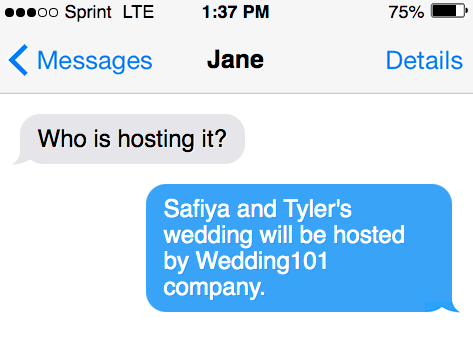
10 ways to learn how to use the apostrophe correctly
Here are ten exercises to try to try out to help you understand the apostrophe better:
- Use an Apostrophe to Create Contractions
- Use an Apostrophe to Shorten Other Words
- Use Apostrophe + “S” With Nouns That Don’t End in “S”
- Use an Apostrophe With Plural Nouns That Are Singular In Meaning
- Use Only an Apostrophe With Plural Nouns That End in “S”
- Use an Apostrophe With Singular Nouns That End in “S” (Sometimes)
- Use an Apostrophe When Two Nouns Own Something
- Use an Apostrophe For Compound Words
- Use an Apostrophe For Compound Nouns
Examples
- It’s his first birthday next week.
- The sailor’s uniform was wet after the storm.
- James’ house is right around the corner.
- Sherry and Shelly’s mother will be present.
Apostrophe rules
- The apostrophe gets used to show ownership of something single.
- Putting an apostrophe in a word to signify that it belongs to more than one person.
- To indicate possession of a single compound noun (such as mother-in-law), add an apostrophe and a s to the end of the word.
- When using a contraction, the apostrophe should be used. After a letter or letters have been deleted, the apostrophe should be inserted into the space left behind.
- Several other ways to form plurals include abbreviations, single characters, and numerical representations.
- There are several instances in which periods of time or sums of money are employed as possessive adjectives, which require the use of apostrophes.
- It is not appropriate to use an apostrophe with the personal pronouns hers, ours, yours, theirs, theirs, its, whose, or the pronoun oneself.
- Be careful not to confuse an apostrophe with a single quotation mark (‘) when using an apostrophe before a word or number. An apostrophe should be written as (‘), not (‘).
- Be on the lookout for spurious possessives, which frequently crop up with nouns that end in s. It is not necessary to include an apostrophe after noun-derived adjectives that finish in “s.” In-depth examination is the most helpful kind of navigation.
When to use an apostrophe
The apostrophe can get utilized in three ways: first, it can produce possessive nouns.
Second, it can get used to indicate the omission of letters.
And third, it can get used to denote plurals of letters, numerals, and symbols.
It is improper to employ apostrophes in the formation of possessive pronouns or to form noun plurals that are not possessive.
Understanding using the apostrophe before or after the “S”
If the word’s plural is made by adding an “s” to it (for example, cats), then the apostrophe should go after the “s.”
When forming the plural version of a word that does not require the addition of an “s” (for example, children), use the apostrophe “s” (‘s) as you would with the single form.
Examples
- The cat’s hair was all over my dress.
- The cats’ tree house fell.
Understanding using the apostrophe after “S” in names
Like when referring to last names (surnames) or people.
Where do you put an apostrophe after a last name?
When referring to an individual, use an apostrophe followed by a period after the s. When referring to a plural, use simply the apostrophe.
You have the option of using simply the apostrophe or the’s when the last letter of a family name is an “s” or “z.”
Examples
- Brett’s car was in the wrong parking area.
- The Warnes’ car was parked a long way from home.
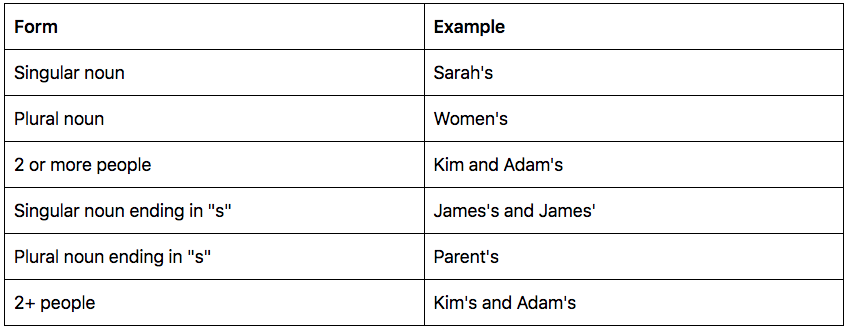
More punctuation marks (all 26 marks)
| Symbol | Name | Example |
| . | Period | I got this at the fair. |
| ? | Question mark | How many trucks does he have? |
| ! | Exclamation point | Wow! You’re a great rider. |
| , | Comma | I like the movie, but the color grading is odd to me. |
| : | Colon | Here are some fun ideas for the party: trivia questions, shuffle board, and more. |
| ; | Semicolon | I’ll visit you once I’m done with work; that’s a promise. |
| – | Hyphen | I have double-life situations. |
| – | En dash | How long is a China-Russia fight? |
| — | Em dash | The dog—and I’m afraid of four-legged animals—was so adorable. |
| ( ) | Parentheses | His favorite team (Chicago Bulls) has a chance to win the title. |
| [ ] | Square brackets | The AP writer said “[head] of baseball operations was disappointed.” |
| { } | Curly brackets | The colors {orange, green, lilac, blue} are for the garage. |
| < > | Angle brackets | |
| “ ” | Quotation marks | Bryan called it a “great situation.” |
| ‘ | Apostrophe | Some of Susan’s clothes are missing. |
| / | Slash or Virgule | I’m ordering food/dessert/more. |
| … | Ellipses | According to the school the “president… was disappointed.” |
| * | Asterisk | *Data from The Economist |
| & | Ampersand | Tiffany & Co. |
| • | Bullet point | • Simple • Great • Awesome |
| # | Pound symbol | #1 selling |
| ~ | Tilde | Bryan owns ~10 pairs of shoes. |
| \ | Backslash | |
| @ | At symbol | mary@gmail.com |
| ^ | Caret symbol | 3^3 = 27 |
| | | Pipe symbol |
Common FAQs
Common questions and answers from English speakers and writers.
How are apostrophes used in contractions?
The apostrophe is always inserted into the spot where the previous letter used to be. For instance, “it is” can be written as “couldn’t,” “don’t,” “isn’t,” “you’re,” “she’s,” and so on.
Does an apostrophe come after the “Z” letter?
When showing possession, common nouns that finish in the letters s, z, or x should, in most cases, be written with an apostrophe followed by an s.
How do I use an apostrophe in a literary device?
A speech or address to somebody who is not present or to a personified object, such as Yorick’s skull in Hamlet, is an example of the literary device known as an apostrophe.
Ir originates from the Greek term apostrephein, which translates to “to turn aside.”
How do I use an apostrophe to indicate ownership or possession?
To construct possessive nouns, often known as nouns that demonstrate “ownership” or “possession” of something, apostrophes that show possession typically get employed.
Possession can get indicated with apostrophes by appending either the apostrophe followed by an “s” (‘s) or simply the apostrophe itself to the end of the noun that is indicating possession.
How is “Happy Valentine’s Day” used with an apostrophe?
Saint Valentine is the person who gave his name to the holiday we celebrate today, as well as the person who served as the holiday’s original inspiration.
In honor of Saint Valentine, the holiday’s name has been shortened to Valentine’s Day by adding an apostrophe and a s after his name.
Does “veterans” the word have an apostrophe?
This is not a day that “belongs” to veterans. Instead, it is a day for commemorating all veterans. The word “veterans day” does not include an apostrophe but does include an “s” at the end of the word “veterans.” This is because the day is not a day that “belongs” to veterans.
Does “Master’s Degree” have an apostrophe?
When writing bachelor’s degree and master’s degree, the possessive form of the apostrophe should be used, but not when writing master of arts or master of science. To avoid confusion, neither “associate degree” nor “doctoral degree” should be written with an apostrophe (possessive).
Does “Mother’s Day” have an apostrophe?
The apostrophe comes before the letter S in the name of Mother’s Day, just like it does for other holidays such as Father’s Day, New Year’s Day, and St. Patrick’s Day.
However, Mother’s Day presents a unique challenge because its originator, Anna Jarvis, demanded that the punctuation mark be placed in this specific location.
What is a curly apostrophe?
The majority of publishers choose to use smart apostrophes, which are sometimes referred to as curly or typographer’s apostrophes, because of their more professional appearance.
Because of a function known as smart quotes, most word processors will likely generate them for you automatically by default. You’ll notice that the punctuation marks used in this paragraph and the rest of this text are smart apostrophes.
Does “Bachelor’s Degree” have an apostrophe?
The term “bachelor’s” should get used when discussing a degree earned during the undergraduate level of education. It is possessive and singular since only one person can hold the degree at any given time.
The apostrophe after the term “bachelor’s” indicates that the recipient has the degree that was achieved.
Sources:
- The Three Uses Of Apostrophe
- When and How To Use an Apostrophe
- Apostrophe Rules
- Learn When to Use an Apostrophe
- When Not To Use An Apostrophe: Avoid Common Mistakes
- 10 Ways You’re Still Using Apostrophes Wrong
- Common Apostrophe Errors
- Common Apostrophe Errors
- The Apostrophe with Letters, Numbers, and Abbreviations
- Apostrophes in Plural Acronyms and Abbreviations
Inside this article
Fact checked:
Content is rigorously reviewed by a team of qualified and experienced fact checkers. Fact checkers review articles for factual accuracy, relevance, and timeliness. Learn more.
Core lessons
Glossary
- Abstract Noun
- Accusative Case
- Anecdote
- Antonym
- Active Sentence
- Adverb
- Adjective
- Allegory
- Alliteration
- Adjective Clause
- Adjective Phrase
- Ampersand
- Anastrophe
- Adverbial Clause
- Appositive Phrase
- Clause
- Compound Adjective
- Complex Sentence
- Compound Words
- Compound Predicate
- Common Noun
- Comparative Adjective
- Comparative and Superlative
- Compound Noun
- Compound Subject
- Compound Sentence
- Copular Verb
- Collective Noun
- Colloquialism
- Conciseness
- Consonance
- Conditional
- Concrete Noun
- Conjunction
- Conjugation
- Conditional Sentence
- Comma Splice
- Correlative Conjunction
- Coordinating Conjunction
- Coordinate Adjective
- Cumulative Adjective
- Dative Case
- Determiner
- Declarative Sentence
- Declarative Statement
- Direct Object Pronoun
- Direct Object
- Diction
- Diphthong
- Dangling Modifier
- Demonstrative Pronoun
- Demonstrative Adjective
- Direct Characterization
- Definite Article
- Doublespeak
- False Dilemma Fallacy
- Future Perfect Progressive
- Future Simple
- Future Perfect Continuous
- Future Perfect
- First Conditional
- Irregular Adjective
- Irregular Verb
- Imperative Sentence
- Indefinite Article
- Intransitive Verb
- Introductory Phrase
- Indefinite Pronoun
- Indirect Characterization
- Interrogative Sentence
- Intensive Pronoun
- Inanimate Object
- Indefinite Tense
- Infinitive Phrase
- Interjection
- Intensifier
- Infinitive
- Indicative Mood
- Participle
- Parallelism
- Prepositional Phrase
- Past Simple Tense
- Past Continuous Tense
- Past Perfect Tense
- Past Progressive Tense
- Present Simple Tense
- Present Perfect Tense
- Personal Pronoun
- Personification
- Persuasive Writing
- Parallel Structure
- Phrasal Verb
- Predicate Adjective
- Predicate Nominative
- Phonetic Language
- Plural Noun
- Punctuation
- Punctuation Marks
- Preposition
- Preposition of Place
- Parts of Speech
- Possessive Adjective
- Possessive Determiner
- Possessive Case
- Possessive Noun
- Proper Adjective
- Proper Noun
- Present Participle
- Prefix
- Predicate



